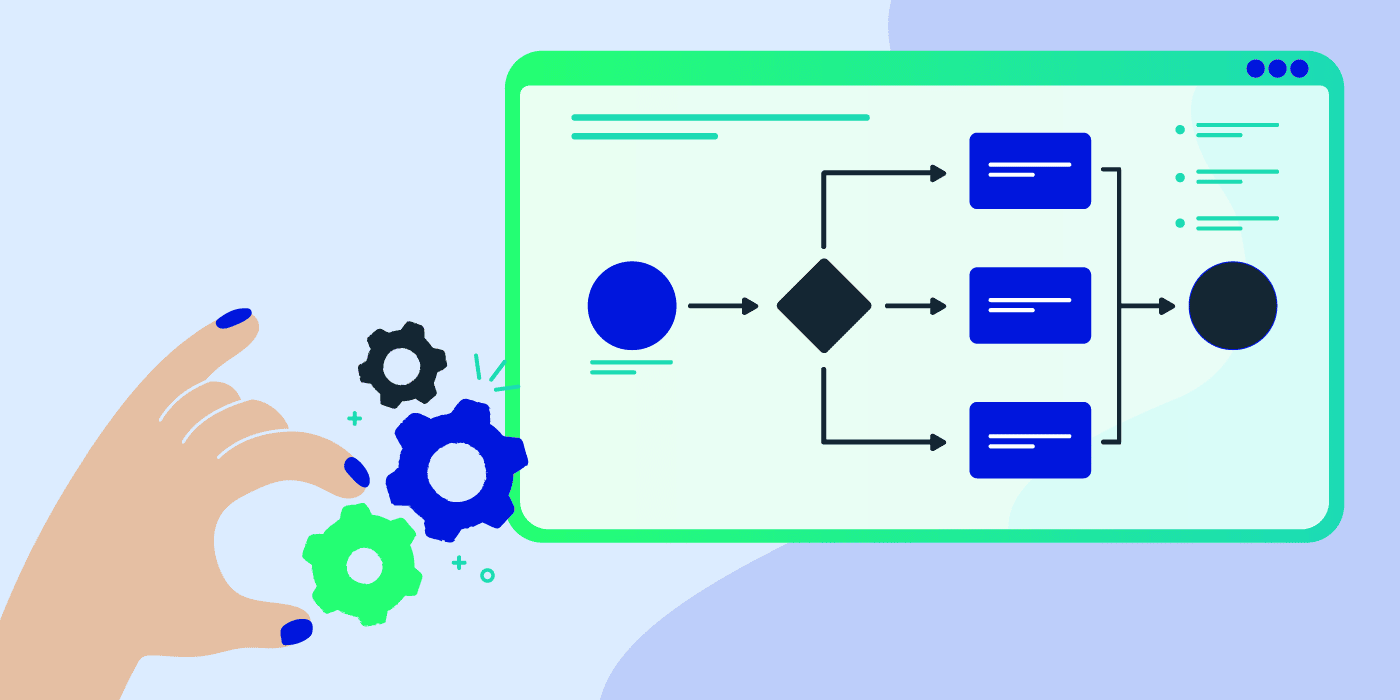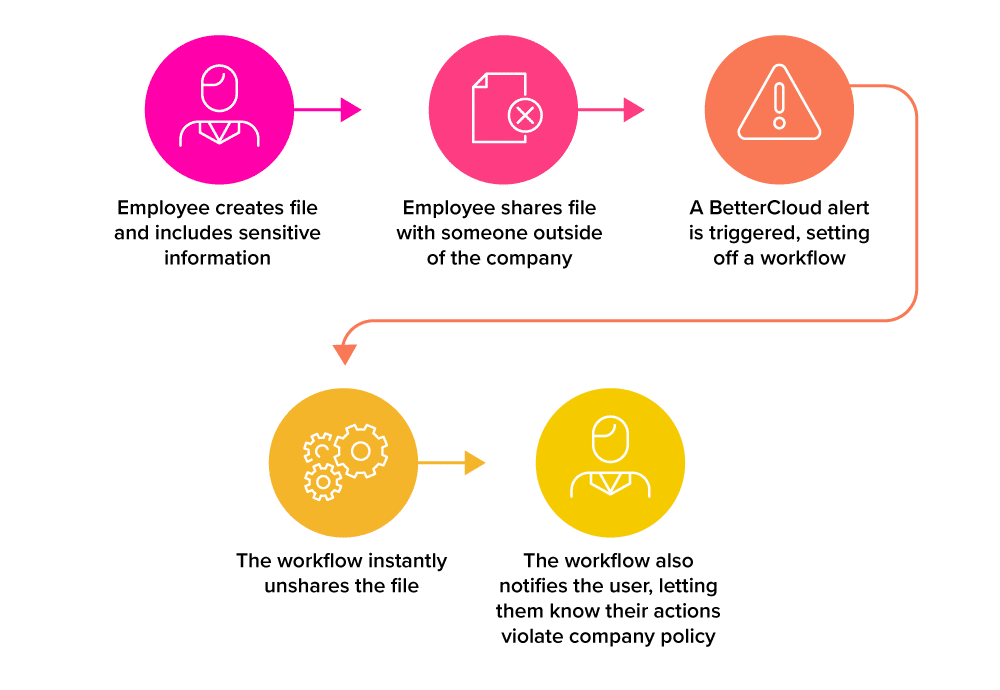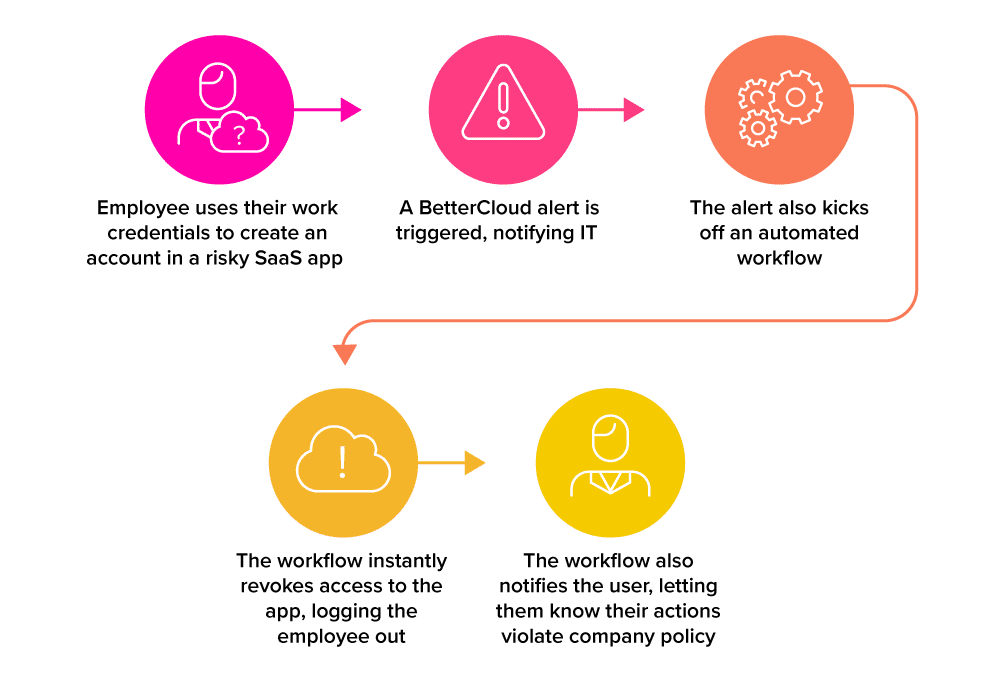Five IT automation workflows every help desk needs
May 29, 2025
6 minute read

Let’s face it. As a cost center, IT departments will likely never have enough staff to cover everything that is thrown at them. As the number of SaaS apps IT is responsible for managing varies and SaaS sprawl concerns grow every year, so does the need for IT automation. Without it, your help desk might be on track for—or even in the midst of—a meltdown.
Automating as many of the routine tasks associated with SaaS management is a great way to save time, reduce errors, and transform your help desk’s day to day work. In this article, we’ll highlight the top processes every IT department can and should be automating.
A quick note before we dive in. While the market for automation tools is filled with choices, you want to make sure to use a solution that is purpose-built for IT and is a unified platform covering every aspect of SaaS lifecycle management. A fully featured SaaS management platform (SMP) with an easy to use, no-code builder gives the power of automation to anyone on your IT team. This is essential because automated workflows should be regularly reviewed and updated over time, as businesses grow and tech stacks evolve.
The SMP you choose for IT automation should include a deep library of actions to include in your workflows and flexible features that gives you the ability to customize your workflows to meet your organization’s needs. The more things you are able to automate, the more strategic your IT team can be with their time. You also want to make sure the IT automation solution you choose includes flat fee pricing, so your costs don’t increase the more you automate.
#1: Resolving help desk tickets
Getting to a zero ticket queue is every IT leader’s dream. However, without automated workflows, you would need an incredibly well-staffed IT department to get there.
By combining the power of SMP with an ITSM like Jira or ServiceNow, you can create self-service portals for employees to request app access. These portals are powered by automated workflows that instantly receive the ticket data, request approval from the manager, automatically grant access to the app, and notify the user.

Another trigger point can actually be done through Slack. With the BetterCloud Self Service agent, IT is able to set up forms that end users can complete in Slack that automatically trigger an automated workflow to complete their request. Common requests like password resets, resetting authentication factors, and more can all be done without IT lifting a finger.
The best part is that IT doesn’t have to do anything to fulfill this request—the entire process is 100% automated. Workflows like these can reduce the number of tickets that IT must handle manually by 50% or more.
#2: Zero-touch offboarding
Offboarding an employee is easily one of the most time-consuming tasks IT departments must handle. Without automation, it can take hours or even days. When offboarding takes too long, the risks of a disgruntled employee causing harm increase significantly.
Automation also makes sure steps aren’t missed in long, complex offboarding processes. With over 100 SaaS apps in the average IT landscape, it’s easy to miss reclaiming a license, and wind up paying for app access you aren’t using. When resource access isn’t transferred quickly, employees can lose access to critical shared files, hampering productivity.
SaaS management platforms are powerhouses for automating long offboarding processes. The graphic below shows how, with just the submission of an IT ticket, an offboarding workflow can be instantly kicked off. Within minutes, access is revoked across numerous apps, devices are locked, resource ownership is transferred, email is forwarded, and much more.

To discover the 14 steps every offboarding process should include, and a step-by-step guide for automating the process into a workflow, check out our Ultimate Checklist for Employee Offboarding.

#3. File sharing remediation
The greatest threats to IT security don’t always come from malicious outside actors. File-sharing apps have made it easier than ever for a well-intentioned employee to cause a data leak or breach. It takes just minutes for someone to add sensitive or proprietary information into a document and share it with the wrong person, or worse, publicly for the world to find.
This alert-based security workflow reduces IT’s threat landscape with the power of automation. As soon as BetterCloud detects that a file has been created that contains sensitive information and has been improperly shared, a workflow will immediately kick off. In the example below, the file is immediately unshared and the user is notified that their actions violated security policy.

These alert-based security workflows help you create a “self-healing” IT environment. A SaaS management platform allows IT and security team members to create and enforce security policies automatically—reducing alert fatigue, educating users, and improving your company’s overall security posture.
#4. Revoking OAuth access
Another way your well-meaning colleagues can become insider threats is by granting OAuth access to unsanctioned apps. It’s very simple for an employee to decide to use a new app, click the “Create Account with Google” button, and just like that, it now has broad access to modify, delete, and read company data.
Shadow IT—using apps not approved by IT—is notoriously difficult to detect. An SMP gives you not only the visibility you need to see what apps have access to your environment, but also the ability to automatically take action.
In the workflow illustrated below, BetterCloud automatically detects when an employee uses their work credentials to grant OAuth access to a risky app and triggers an alert. The alert instantly kicks off a workflow, notifying IT and revoking the user’s access to the app. Finally, it sends an email to the user letting them know about their potentially risky behavior.

Similar to the file security workflow we discussed earlier, this type of workflow remediates a potential threat with input from IT. Emails and notifications in each of these workflows can be completely customized to let IT, managers, and the employees know about the policy violation and the risk their actions pose.
#5. Instant Slack and Zoom war rooms
Not every workflow needs to be triggered automatically. On-demand workflows can complete a series of tasks with just a click of a button. To respond quickly when a security incident occurs, IT can immediately create a virtual war room in Slack and Zoom.
These war rooms can instantly notify a wide range of people—and give them a designated, virtual place to meet—the minute the incident occurs. A single workflow can even create different rooms for response types, including:
- A business incident response channel to discuss logistics only—i.e., what’s happening, when it’s happening
- A technical incident response channel to discuss the technical aspects only—i.e., how to mitigate the security incident
The workflow can also automatically create a Zoom call so that leadership can discuss remediation right away.

Conclusion
These five workflows are just the tip of the iceberg for what IT can automate in a SaaS management platform. Strategic BetterCloud customers often create 20 or more workflows that automate everything from onboarding to file security. Because BetterCloud ingests SaaS data to enable more powerful actions, anyone in your IT and security team can use its no-code builder to create and manage workflows.
With each workflow you create, your IT team becomes more strategic, the employees you support have a better experience, and your IT environment becomes more secure. To see BetterCloud workflows in action, schedule a demo today.





